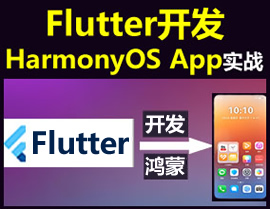Golang Go语言如何解析 JSON
Golang Go语言如何解析 JSON
当静态编程语言使用到 JSON 的时候,总是会有些费力。一方面,JSON 数据可能是任何形式的,从一个简单的数字,到一个复杂的包含内嵌对象的数组。当使用 Go 语言的时候,这意味着你要将这些变化多端的 JSON 数据放入结构化的变量中去。
幸运地是,Go 尽力尝试帮我们降低编码难度,为我们提供了许多方式来解析 JSON 数据。
概述
Go 标准库的 json 包为我们提供了我们想要的功能。对于任意的 JSON 字符串,标准的解析方法如下:
import "encoding/json" //...// … myJsonString :=
{"some":"json"}
//&myStoredVariableis the address of the variable we want to store our // parsed data in json.Unmarshall([]byte(myJsonString), &myStoredVariable) //…
本文中我们要讨论的是,对于 myStoredVariable 变量的类型,你可以有哪些不同的选择,以及决定何时采用何种类型。
在处理 JSON 数据时,你会遇到两种情况:
- 结构化数据
- 非结构化数据
结构化数据
我们先从结构化数据开始,因为它们处理起来相对容易一些。对于这类数据我们需要提前知晓其结构。比如,你有一个 Bird 对象,每种鸟都有 species 字段和一个 description 字段:
{
"species": "pigeon",
"decription": "likes to perch on rocks"
}
读取此类数据,只要创建一个 struct 结构体,作为你想要解析的数据的镜像。对于这个例子,我们会创建一个包含 Species 和 Description 字段的 Bird 结构体:
type Bird struct {
Species string
Description string
}
然后将数据解析出来,如下:
birdJson := `{"species": "pigeon","description": "likes to perch on rocks"}`
var bird Bird
json.Unmarshal([]byte(birdJson), &bird)
fmt.Printf("Species: %s, Description: %s", bird.Species, bird.Description)
//Species: pigeon, Description: likes to perch on rocks
转换时,Go 不区分名称大小写问题,使用 JSON 属性与字段都转为小写后相同作为映射依据。所以,
Bird结构的Species字段会映射到名为species,或者Species或者sPeCiEs的 JSON 属性。
JSON 数组
当遇到一个 Bird 数组的时候,又会发生什么呢?
[
{
"species": "pigeon",
"decription": "likes to perch on rocks"
},
{
"species":"eagle",
"description":"bird of prey"
}
]
既然这个数组的每个元素都是一个 Bird ,你可以创建一个 Bird 类型的数组来解析它:
birdJson := `[{"species":"pigeon","decription":"likes to perch on rocks"},{"species":"eagle","description":"bird of prey"}]`
var birds []Bird
json.Unmarshal([]byte(birdJson), &birds)
fmt.Printf("Birds : %+v", birds)
//Birds : [{Species:pigeon Description:} {Species:eagle Description:bird of prey}]
嵌套对象
现在,考虑这种情况,Bird 有一个 Dimensions 属性,用来描述它的 Height (高度)和 Length (身长):
{
"species": "pigeon",
"decription": "likes to perch on rocks",
"dimensions": {
"height": 24,
"width": 10
}
}
和上一个例子类似,我们需要将这个新的问题对象映射到我们的 Go 代码中。在机构体中加入一个内嵌的 dimensions 字段,让我们先申明一个 dimensions 的结构体类型:
type Dimensions struct {
Height int
Width int
}
然后,Bird 结构体可以包含一个 Dimensions 字段:
type Bird struct {
Species string
Description string
Dimensions Dimensions
}
如此就能用与之前一样的方法进行数据解析了:
birdJson := `{"species":"pigeon","description":"likes to perch on rocks", "dimensions":{"height":24,"width":10}}`
var birds Bird
json.Unmarshal([]byte(birdJson), &birds)
fmt.Printf(bird)
// {pigeon likes to perch on rocks {24 10}}
自定义属性名称
前面提到过 Go 会进行大小写转换来确定结构体字段和 JSON 属性的映射关系。不过很多时候,你会需要一个和 JSON 数据属性不同名的字段名称。
{
"birdType": "pigeon",
"what it does": "likes to perch on rocks"
}
对于上面的 JSON 数据,我想让 birdType 属性映射到 Go 代码中的 Species 字段。同时我也没法给 "what it does" 提供一个合适的字段名称。
为了解决这些情况,我们可以使用结构体字段标签:
type Bird struct {
Species string `json:"birdType"`
Description string `json:"what it does"`
}
现在,我们可以明确地告诉代码,某个 JSON 属性应该映射到哪个字段上了。
birdJson := `{"birdType": "pigeon","what it does": "likes to perch on rocks"}`
var bird Bird
json.Unmarshal([]byte(birdJson), &bird)
fmt.Println(bird)
// {pigeon likes to perch on rocks}
非结构化数据
如果你遇到一些数据,它们的结构和属性名都不确定,那么你就无法使用结构体来解析这些数据了。取而代之地,你可以使用映射( maps )类型。考虑以下的 JSON 形式:
{
"birds": {
"pigeon":"likes to perch on rocks",
"eagle":"bird of prey"
},
"animals": "none"
}
我们没法构建一个结构体来描述上面的数据,因为鸟儿的名字作为对象的键值总是可以变换,而这会导致数据结构的变化。
为了处理这种情况,我们创建一个字符串对应空接口的 map:
birdJson := `{"birds":{"pigeon":"likes to perch on rocks","eagle":"bird of prey"},"animals":"none"}` var result map[string]interface{} json.Unmarshal([]byte(birdJson), &result)// The object stored in the “birds” key is also stored as // a map[string]interface{} type, and its type is asserted from // the interface{} type birds := result[“birds”].(map[string]interface{})
for key, value := range birds { // Each value is an interface{} type, that is type asserted as a string fmt.Println(key, value.(string)) }
每个字符串对应一个 JSON 属性的名称, interface{} 类型对应它的值,这个值可以是任意类型。在代码中,其数据类型通过对 interface{} 进行断言就可以获取到。而且这些映射解析动作可以迭代执行,如此一来,可变数量的键通过一次循环中就能够处理完成。
如何选择
通常情况下,只要你能够使用结构体来描述你的 JSON 数据,你就应该使用它们。只有当遇到数据中有不确定的键或值时,无法使用结构体进行描述,才是你使用映射( map )的唯一理由。
更多关于Golang Go语言如何解析 JSON的实战系列教程也可以访问 https://www.itying.com/category-94-b0.html
我记得原文中好像还有默认数字类型是 float64 之类的
更多关于Golang Go语言如何解析 JSON的实战系列教程也可以访问 https://www.itying.com/category-94-b0.html
数字 float64 的,如果原值是整数可以 int ( xxx.(float64))这样转成可用的。
在Golang中解析JSON是一个常见且相对简单的任务,主要依赖于标准库中的encoding/json包。以下是解析JSON的基本步骤和示例代码:
-
导入
encoding/json包: 首先,你需要在代码中导入encoding/json包,以便使用其提供的函数。 -
定义目标结构体: 创建一个与目标JSON结构相匹配的结构体(struct)。这个结构体将用于存储解析后的JSON数据。
-
解析JSON: 使用
json.Unmarshal函数将JSON数据解析为定义好的结构体。该函数接受两个参数:一个字节切片(通常是JSON字符串的[]byte表示)和一个指向目标结构体的指针,并返回一个错误值。
示例代码如下:
package main
import (
"encoding/json"
"fmt"
)
type Person struct {
Name string `json:"name"`
Age int `json:"age"`
}
func main() {
jsonData := []byte(`{"name": "John", "age": 30}`)
var person Person
err := json.Unmarshal(jsonData, &person)
if err != nil {
fmt.Println("Error parsing JSON:", err)
}
fmt.Printf("Parsed Person: %+v\n", person)
}在这个例子中,我们定义了一个Person结构体,并使用json.Unmarshal函数将JSON数据解析到这个结构体中。如果解析成功,person变量将包含解析后的数据,并且我们可以通过打印或其他方式使用这些数据。








